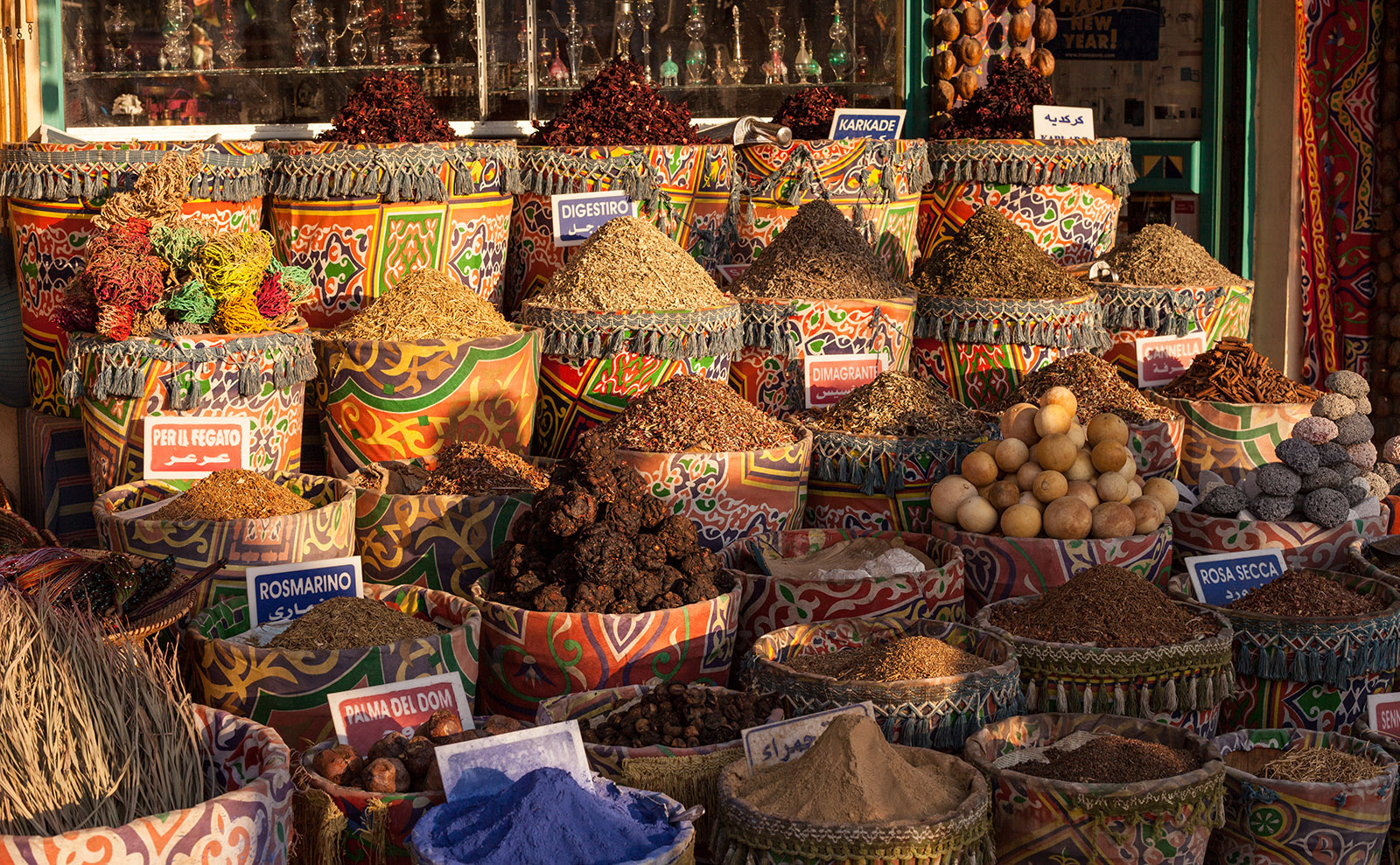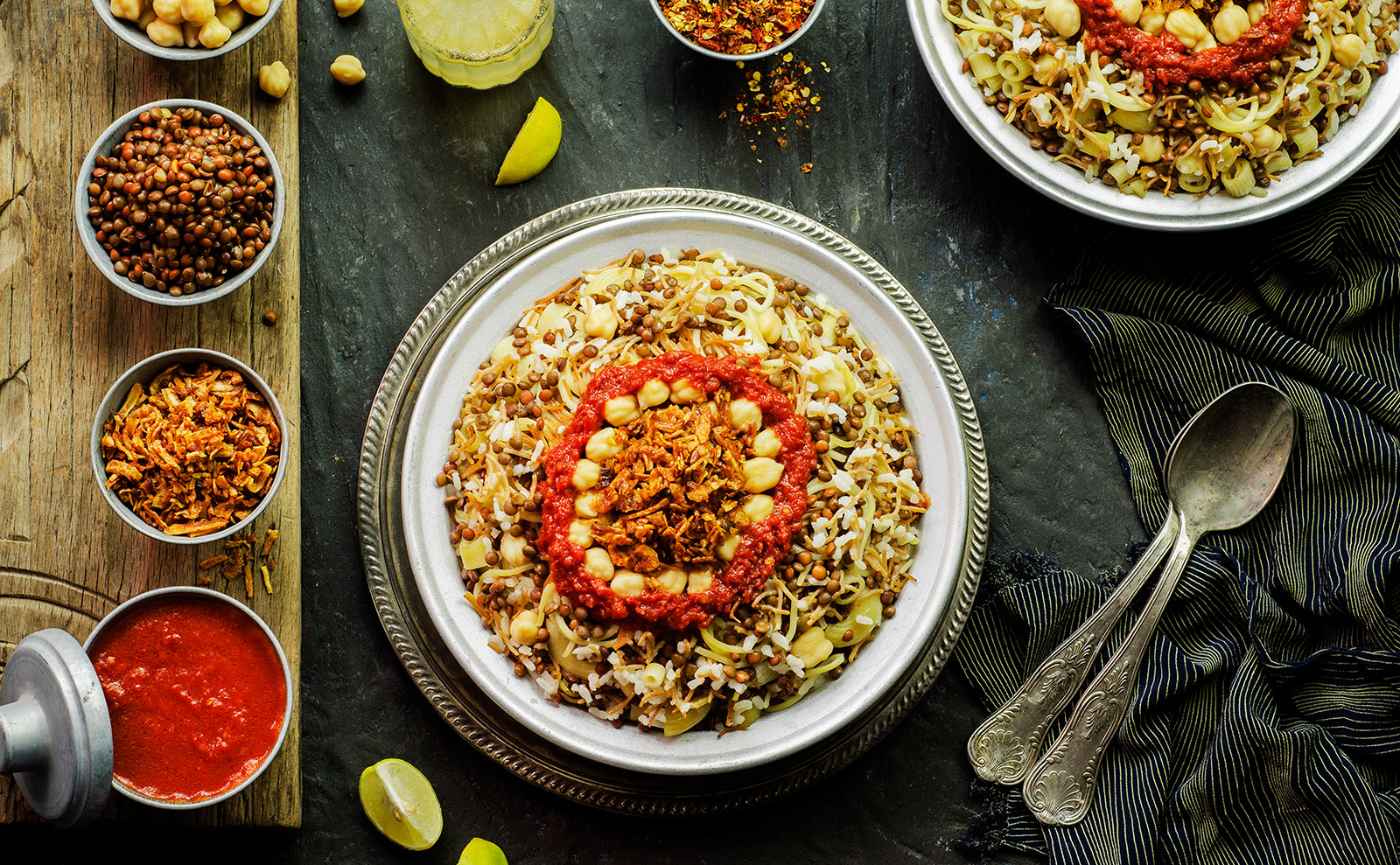
Armchair travel around the world!
Start your reading adventures with our FREE Reading Atlas.

- Around the World in 14 Books
- 7 Thrilling Book Series
- 6 Audiobooks That Are Like Theater For Your Ears



Food and drinks are some of the easiest ways — and the most fun— to vicariously experience another culture. When you add a great book to the mix, you've got the makings of a perfect evening. In Food+Fiction, we recommend a delicious read and a related recipe so you can try the taste of different destinations in your own kitchen.
This post is part of our Food+Fiction series.

The novel A Pure Heart is set in the Egypt of 2016, a city still dealing with the after-effects of the revolution five years before. Although the action is influenced by politics and passionate discord, it’s also a story of love: sibling love, parental love, love of country, and romantic love.
The core of the narrative is the once-close, now-distant relationship between Rose and Gameela, two Egyptian sisters whose choices have taken them on diametrically opposed life paths. Gameela has embraced the more conservative aspects of Islam. And much to Gameela’s chagrin, Rose has married an American who converted, sure, but still.
When we readers meet Mark, we’re as charmed by him as Rose. He’s so comfortable in his own skin, at ease making conversation with anyone, and seems perfectly at home amidst the hustle of modern Cairo. When Rose takes him to a hole-in-the-wall joint for koshari, she does it as a sort of test, and he passes.
Koshari (also: kushari, koshary) is not an ancient Egyptian dish, but it has become the de facto national dish since its origins in the 19th century. A carby delight that combines buttery rice, elbow macaroni, fragrant lentils, and chickpeas, it’s topped with a drizzle of a spiky, tart cumin sauce and tomato sauce seasoned with earthy spices. It’s wildly popular as street food and there are also sit-down restaurants devoted to serving only koshari.
It’s supremely comforting and very easy to prepare — and the components can all be cooked in advance and eaten later, so it’s great for large gatherings, lazy days, or using up the leftover bits and bobs in the fridge.
Although the basics remain the same, different cooks put their own spin on the ingredients and toppings. Some recipes add buttered vermicelli to the mix, in case just one type of pasta isn’t enough. Others skip the baharat seasoning in the tomato sauce or add a dose of hot sauce at the end. In Alexandria, Egypt’s second-largest city, cooks prepare an all-yellow version of koshari using yellow lentils and rice prepared with gold-colored curry and cumin. They might also add Egyptian rolled eggs — boiled, peeled, then fried in ghee — or, and this is genius, they add french fries on the side.
Our version below includes baharat in the tomato sauce because we love a good, earthy spice blend, and we’ve included a cumin-vinegar sauce that is shockingly delicious. You will want to drizzle it on burgers or roasted chicken or hard-boiled eggs!
Don’t be put off by the long list of ingredients and steps. It’s all straightforward and not too time-consuming. Our best advice is to prepare all the components a day or so before you want to eat them, then reheat following the instructions below. There are two advantages: 1) The next day, you get a ‘free’ meal that merely needs to be reheated and assembled, and 2) The flavors meld, so it all tastes even better. (This recipe can also be cut in half without messing anything up.)
Are you a devoted carnivore? This dish is typically served as-is, but if you (like we) need protein to balance out the carbs, you could eat this with fried eggs on top, boiled eggs on the side, or with roasted lamb or roasted chicken as a go-along. Or our favorite: ground lamb cooked with garlic, cumin, and a spritz of lemon juice, then added to the pile.

Serves 8. Total time 60 minutes.
Rice:
Pasta:
Lentils:
Baharat Seasoning:
Chickpeas:
Baharat Tomato Sauce:
Cumin Sauce (Kamouneyah):
Fried onions:
Cook the rice. Place the rice, water, salt, and ghee in a small saucepan; stir to combine. Cover and bring to a boil, then immediately reduce heat to simmer and cook, covered, for 20 minutes. Turn off the heat and let it sit until you’re ready to assemble.
Cook the pasta. Place the water and salt in a large pot and bring to a boil. Add the pasta and cook 10 minutes or so, just until al dente. Drain the water, place the pasta back in the pot with a blop of ghee or a dollop of extra-virgin olive oil. Stir to coat and cover with a lid to keep it warm.
Cook the lentils. Place the lentils in a colander and wash well under cold water, picking out any stones. Place the lentils in a saucepan and cover with cold water. Bring to a boil, then reduce heat to simmer and cook until al dente, about 25 minutes. Remove the lentils to a bowl and heat the oil over medium-high, 2 minutes. Add the onion and saute until translucent, 5-7 minutes. Push the onions to the side and plot in the tomato paste, cumin, salt, and pepper. Cook until slightly darkened, about 2 minutes, then add the tomato sauce, stir to combine, cover, and simmer, 10 minutes.
Make the baharat. Combine all the spices in a small jar, shake to combine, and set aside.
Cook the tomato sauce. Place the oil in a saucepan over medium-high heat and warm, 2 minutes. Add the onion and cook until translucent, 5-7 minutes. Add the crushed garlic, baharat, chili flakes, salt, and pepper. Cook, stirring, 30 seconds, then add the vinegar, stir well, and add the tomato sauce. Bring to a slight boil, then simmer 15 minutes.
Prep the cumin sauce. Place the oil in a saucepan over medium heat and warm it, 2 minutes. Add the garlic, cumin, salt, and black pepper. Stir-fry 20 seconds, until fragrant, then add the vinegar, stir, and add the water. Transfer to a jar with a lid.
Warm the chickpeas. Place the chickpeas and their liquid in a saucepan and simmer until warm. Drain and set aside.
Fry the onion. Heat the oil in a nonstick skillet over high heat, about 3 minutes. Separate the onion slices, place them in a bowl with the starch and salt, and toss until coated. Fry in the hot oil until browned and crisp. Remove to a paper-towel-lined plate.
Assemble! You can throw everything into a bowl however you like, but according to an expert, the way to assemble a perfect koshari bowl is in this order: rice, elbows, lentils, chickpeas, cumin sauce, tomato sauce, fried onions.
Make it ahead of time: If you precook everything and store separately in the fridge, you can place each component in an oven-safe baking dish and reheat them all at once, covered with foil, in a 300F/150C oven. Then assemble and eat. This is an excellent make-ahead dish for dinner parties, book club, or a lazy Sunday afternoon.
She did not fall in love with him suddenly, like a dive in a pool, but gradually, like the way she used to waddle into the sea in Mersa Matruh as a child… She may have taken her first step during that dinner, when she took him, somewhat defiantly, mean-spiritedly, she would later admit, to a sidewalk restaurant selling koshari. Rather than see him squirm at the grimy tables or shy away from the Egyptian carbohydrate bomb of a dish with its layers of pasta, rice, lentils, and fried onions, she watched with a considerable degree of awe as he dowsed his dish in fiery hot sauce and gulped it all up, all the while talking nonstop, seemingly more at home in these surroundings than she was. — Rajia Hassib
This is a story about sisters. And if you know anything about sisters, that means it’s a story of deep love and discord, loyalty and letdowns. The stakes are even higher for these sisters — Rose and Gameela — because their story takes place in 2016, when the dust of Egypt’s revolution was still swirling in the air. {more}
This family saga (320 pages) was published in August of 2019 by Viking. The book takes you to modern-day Cairo and New York. Melissa read A Pure Heart and loved it; it wouldn't be on our site if she didn't recommend it.
Bookshop.org is an online bookstore with a mission to financially support independent bookstores and give back to the book community.
Top image courtesy of Kostenyukova Nataliya/Shutterstock.
Want to keep up with our book-related adventures? Sign up for our newsletter!
Can you help us? If you like this article, share it your friends!
Strong Sense of Place is a website and podcast dedicated to literary travel and books we love. Reading good books increases empathy. Empathy is good for all of us and the amazing world we inhabit.
Strong Sense of Place is a listener-supported podcast. If you like the work we do, you can help make it happen by joining our Patreon! That'll unlock bonus content for you, too — including Mel's secret book reviews and Dave's behind-the-scenes notes for the latest Two Truths and a Lie.
Join our Substack to get our FREE newsletter with podcast updates and behind-the-scenes info join in fun chats about books and travel.

We'll share enough detail to help you decide if a book is for you, but we'll never ruin plot twists or give away the ending.
Content on this site is ©2024 by Smudge Publishing, unless otherwise noted. Peace be with you, person who reads the small type.